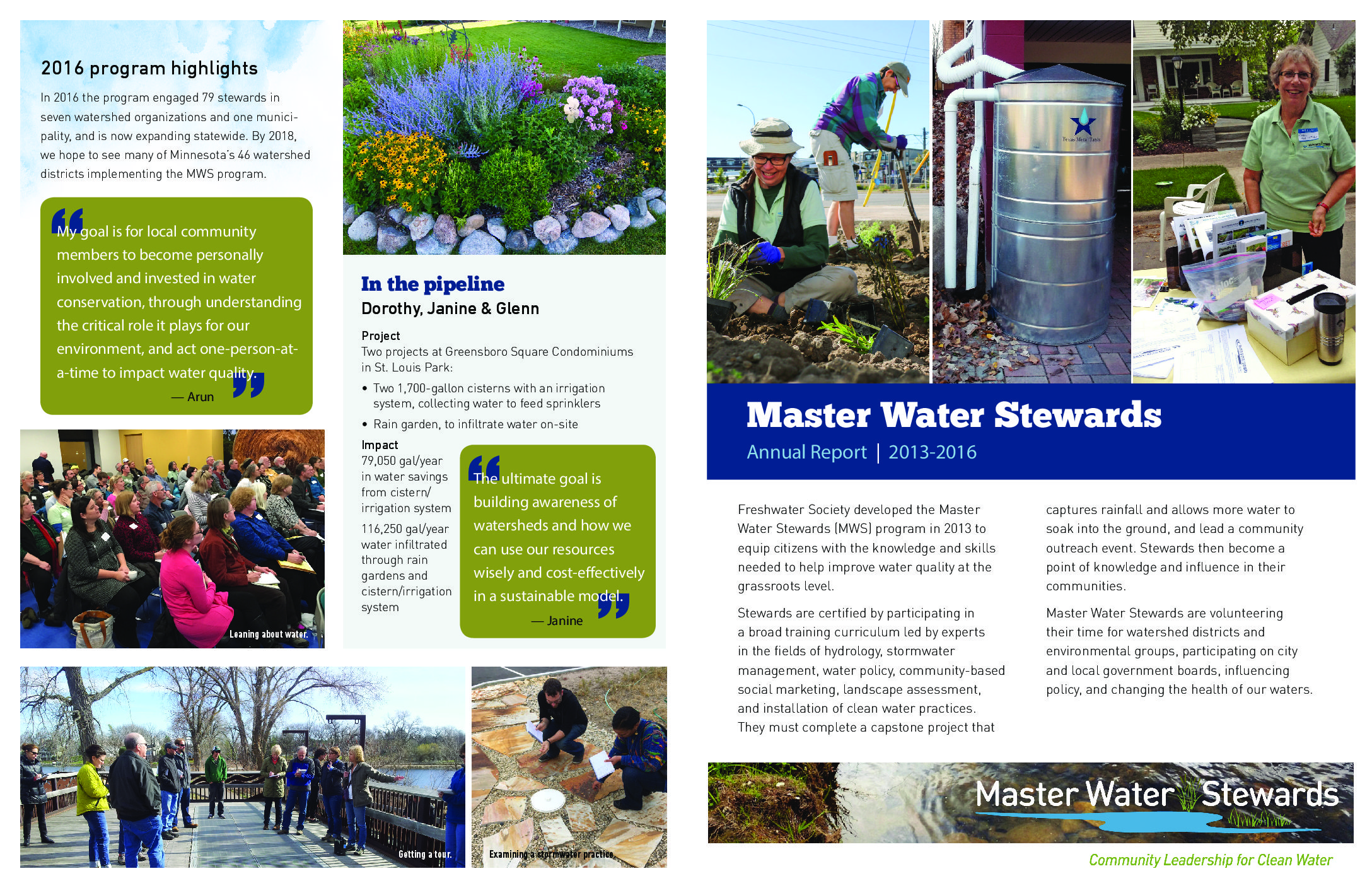Master Water Stewards: A Freshwater Society Partnership
Since the start of the Master Water Stewards program in 2013, Freshwater Society has partnered with a number of Water Management Organizations and Municipalities to bring about real community-wide action and change around stormwater management. With a number of partners already and plans to expand statewide, read on to learn more about the program and how your organization can get involved.
Please feel free to contact our program coordinator Deirdre Coleman (dcoleman@freshwater.org, (651) 313-5806) if you have any questions about the program or are ready to get involved.
What is the Master Water Stewards program?
Developed by Freshwater Society in 2013, the Master Water Stewards program is a volunteer education and outreach program designed to equip citizens with the knowledge and skills needed to help improve water quality at the grassroots level.
Stewards are certified by participating in a broad training curriculum led by experts in the fields of hydrology, stormwater management, water policy, community-based social marketing, landscape assessment, and installation of clean water practices. At the end of the certification process, all Stewards must complete a capstone project that captures rainfall and allows more water to soak into the ground and lead a community outreach event. Stewards then become a point of knowledge and influence in their communities.
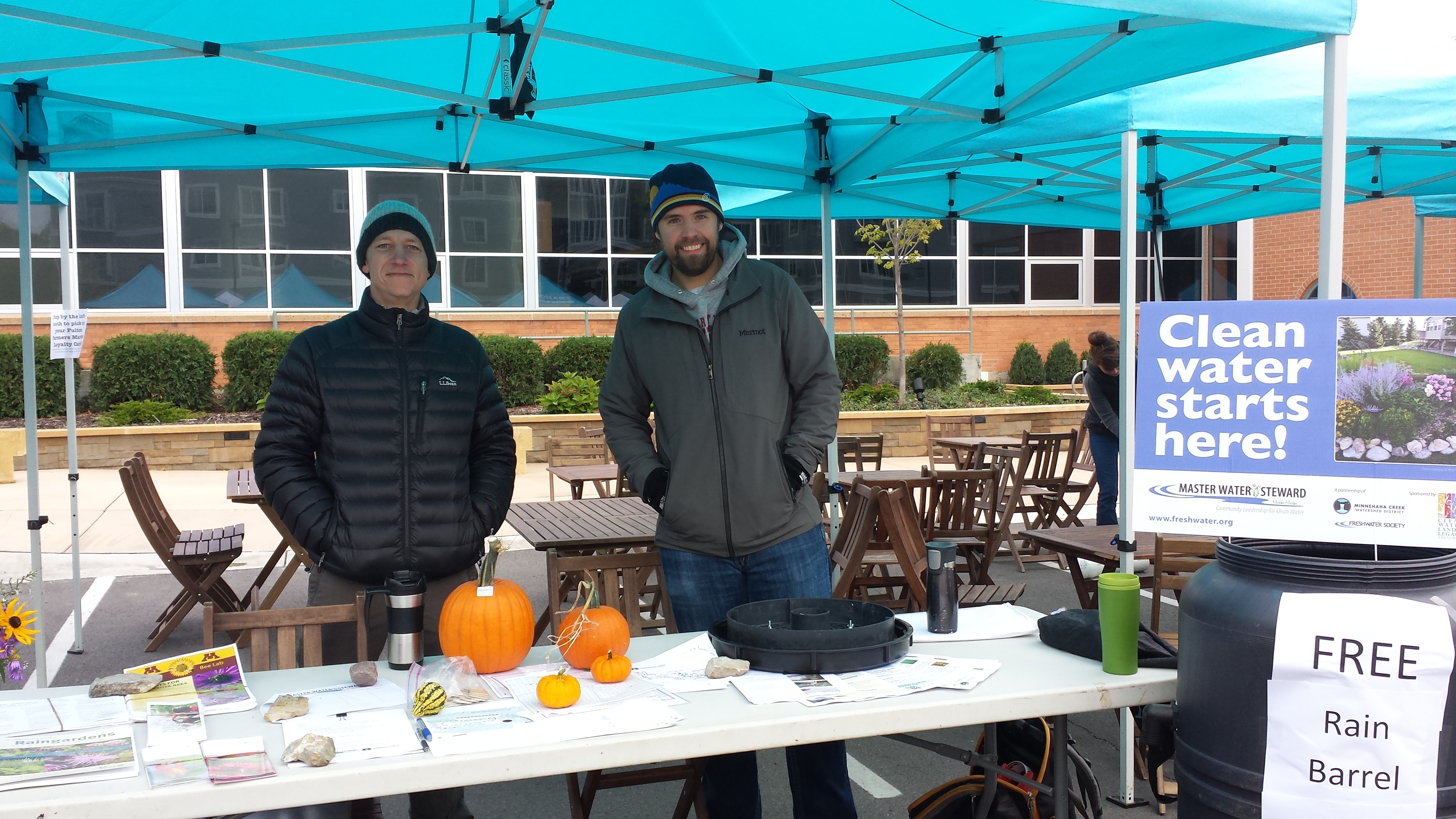
Brief History
Stewards are sponsored by a partner organization and attend classes with a cohort of other prospective Stewards in their region. The program is currently focused in the Twin Cities Metro area of Minnesota, with plans to expand statewide in the coming years. The program began with a pilot in the Minnehaha Creek Watershed District in 2013. This three year pilot certified 80 stewards within the watershed. In 2016 we expanded throughout the broader metro area. At the end of 2016, there were 141 stewards across 7 watershed management organizations and 1 municipality involved in the program. See a list of our current partners here.
How Does the Program Work?
Course curriculum consists of twelve classes on topics ranging from hydrology to water policy, community engagement and rainscaping. All courses are taught by experts in their fields. Courses are taught through a combination of interactive content online followed by an in-person class. In-person classes are designed to engage Stewards around these issues through the completion of a number of real-world based activities. This includes everything from calculating runoff of a property, to reading and discussing local SWPPP documents.
Classroom and online learning consists of approximately fifty hours of training. Following the completion of this training, the program shifts to a focus on action through the implementation of a capstone project.
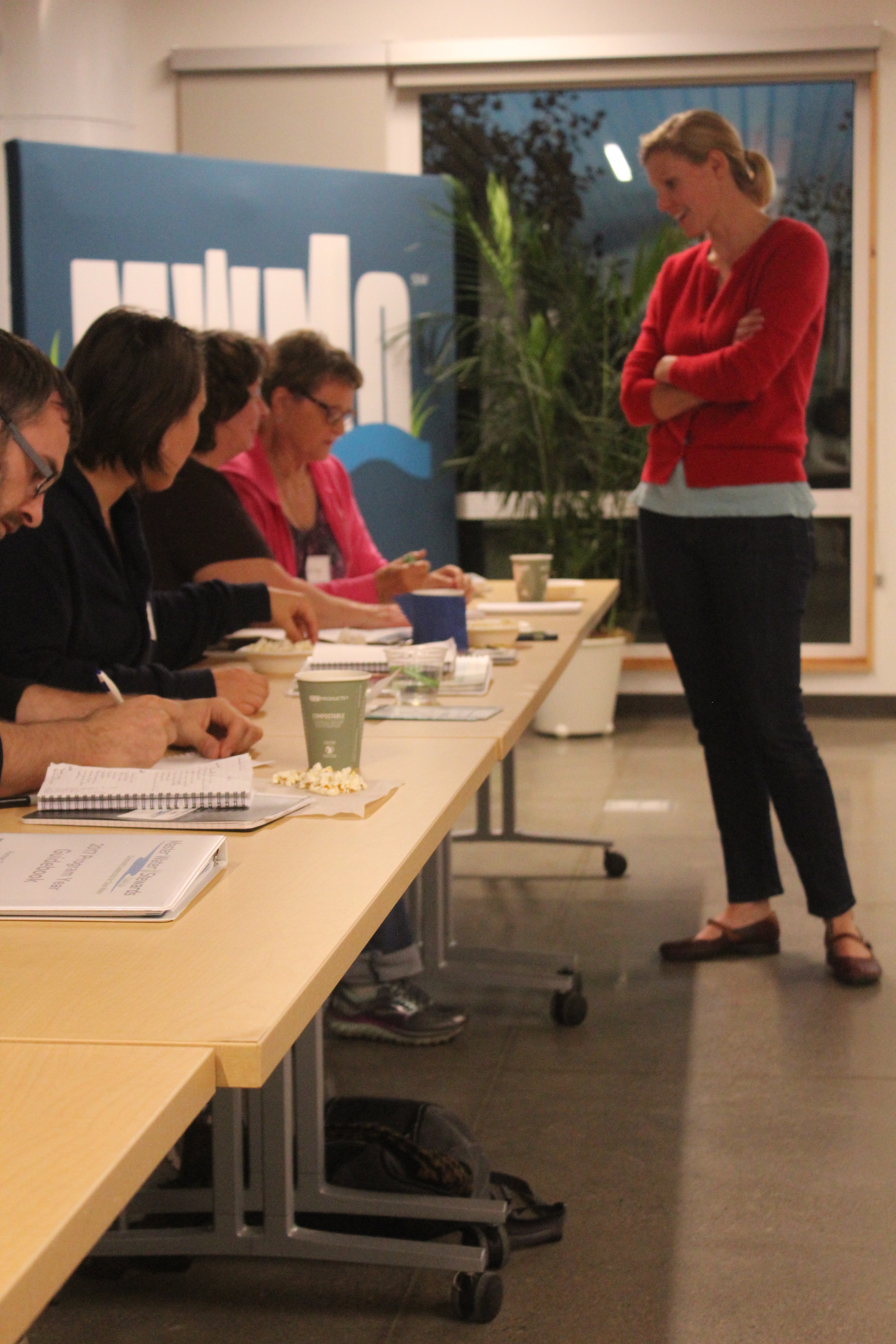
The Capstone Project
The Capstone Project allows new Stewards to put their knowledge into action. Stewards work in pairs to complete a project within their partner organization's jurisdiction and is comprised of two parts: an installation and an outreach campaign.

The installation project varies widely in type and scale and is focused on matching both the Stewards' and the partner organization's interests and goals for stormwater management. Past projects usually encompass the installation of a rain barrel, cistern, raingarden or other stormwater BMP in a Steward's yard, a local church, or community organization. Requirements for the installation project are flexible and are designed to meet the partner organization's needs.
In tandem with this installation project, Stewards are also required to complete an outreach campaign in their community about stormwater management. This campaign is designed to increase community awareness and initiate efforts to contain stormwater and non-point pollution in surrounding neighborhoods. Past outreach has included door knocking campaigns, community get-togethers, and tabling at a number of different events.
Learn more about the dramatic changes the program has already brought about here.
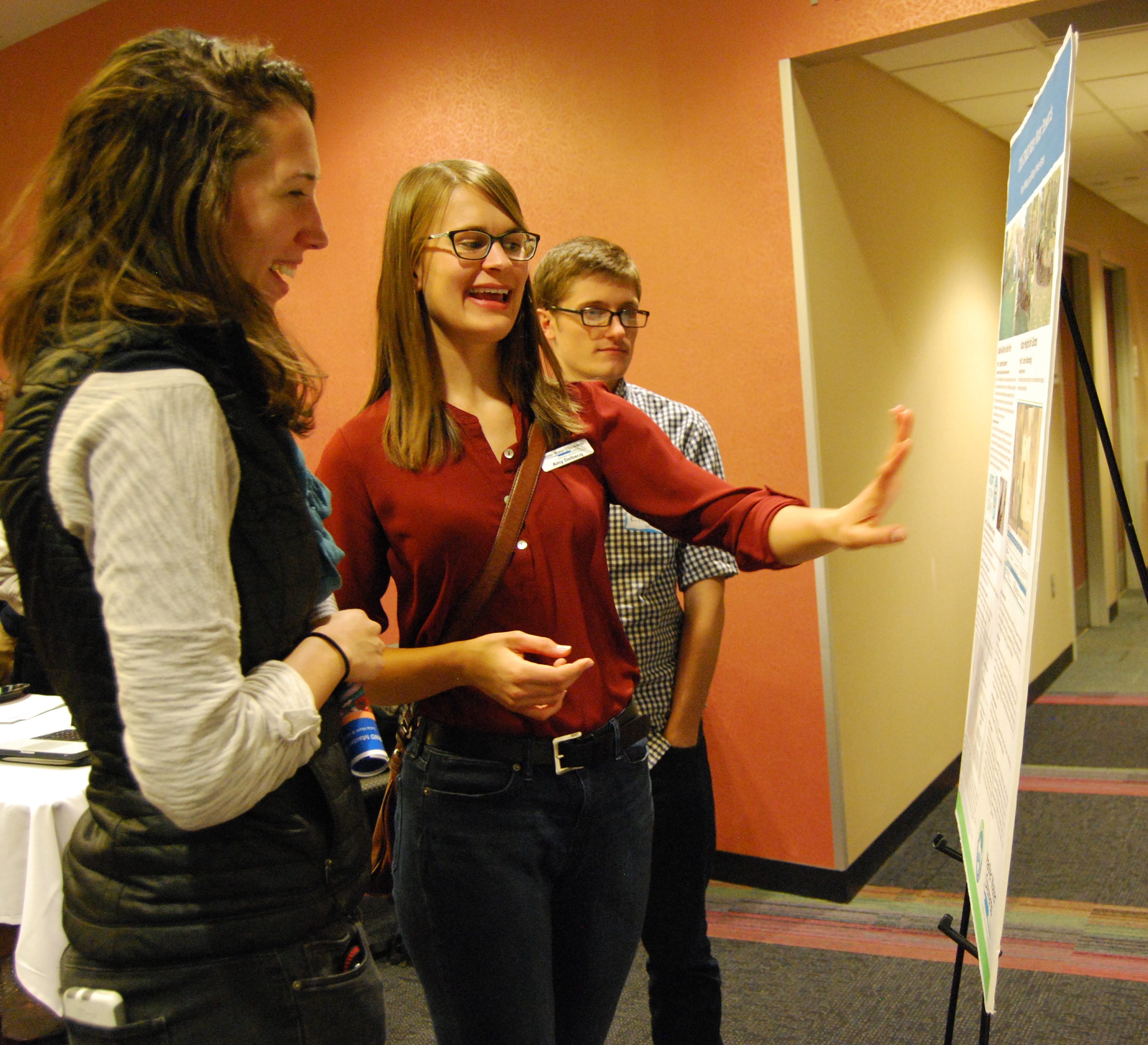
Once a new Steward completes training and a capstone project, they are certified and become a super volunteer!
As a certified Steward, they are required to complete 50 volunteer hours and 8 continuing education hours in their first year and 25 volunteer hours and 8 continuing education each following year.
Freshwater Society's Role
Freshwater Society helps partner organizations by working with them in the early phases of recruitment. We provide materials, informational sessions, promotion and press releases to help raise awareness around the program. Recruitment work is shared with partners to ensure partners find Stewards they are excited to work with. All partner organizations vet their own stewards and are encouraged to recruit within target areas in their communities.
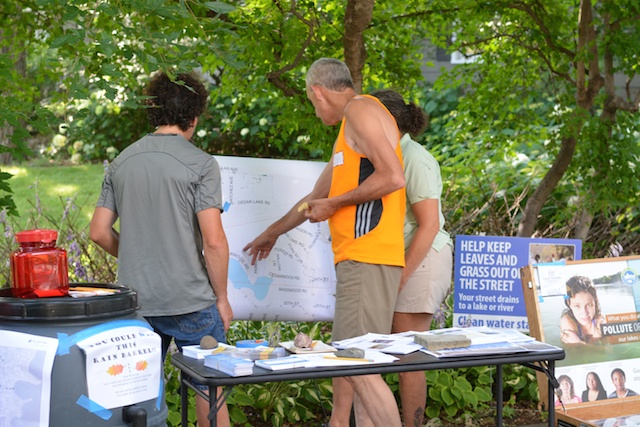
Following recruitment, Freshwater provides access and hosts the online curriculum for new Stewards. We also arrange facilitators for in-person class sessions and provide access for Stewards to each course's expert teacher through interactive online office hours.

Upon the completion of coursework, Freshwater works directly with Stewards and partner organizations to assist in the completion of the capstone project. Partners are encouraged to be involved at this phase because we want partners to get the projects they want completed out of the capstone projects. In addition, we encourage Stewards to go through whatever cost share their sponsoring partner might have in place in order to learn the process and implement it in their future Steward work. At this phase of the program, Freshwater also works to track the impact of each project using the MIDS calculator so that cities can use this data for MS4 reporting.
After all this, we continue to track Steward volunteer and continuing education hours of each Steward to ensure they remain actively engaged in their communities. We also provide a number of resources and volunteer outreach and continuing education opportunities for Stewards each year.
Questions? Ready to take the next step?
Contact Deirdre Coleman (dcoleman@freshwater.org, (651) 313-5806)
- The curriculum consists of 12 courses including hydrology, water policy, community engagement and rainscaping. All taught by experts in their fields, so Water Policy is taught by Rebecca Flood and Stormwater is taught by Sharam Missagi who is a University of MN extension Professor….we are lucky to have such great instuctors in this program and most have helped shape this program and all have created the materials for their classes.
- We call it blended learning because we put all of the course content online as an interactive text book if you will, and then we come together in a classroom setting to interact with the subject matter expert and ask questions as well as do activities around that topic area. So in Hydrology, for instance, we will actually be calculating runoff from a certain property, or in water policy we will be looking at SWPPPs relevant to that steward group.
- All of this classroom time and online learning equates to about 50 hours of learning and then the program shifts to doing something tangible to make a difference in the health of their water. This is the part of the program where we differ from the Master Gardener or Master Naturalist programs….
- And that is the Capstone project. The capstone encompasses all that the steward has learned throughout the program and puts it in to motion. So there is an initial observation of the stewards community and what is and isn’t and should be happening around stormwater, then there is an education and outreach campaign that the steward designs to actually change (and measure that change) behavior. The next component is to implement a BMP and actually infiltrate some water, and then we do an evaluation of the entire capstone in order to learn from the process.
- The steward can then be certified…
- …and then becomes this super volunteer. As a certified steward there is 50 hours of volunteer time required in the first year and 8 continuing ed. hours. Each year after is 25 hours of volunteer time plus the 8 CEUs
- Freshwater’s role in bringing the stewards to a partner is to do some of the recruiting. We provide materials, informational sessions, promotion, press releases…but we want this task to be shared because we want you to have stewards that you want to work with. So you will vet them, and you will recruit from a lake association that you want to work with or a targeted area in your community.
- The curriculum we talked about already so we provide access and host the online curriculum and arrange for a facilitator for the classroom and access to the expert through interactive office hours. The experts have also agreed to answer either calls or e-mails from the stewards during the weeks of their classes.
- We hand-hold stewards through the Capstone projects along with our partners…We want our partners to be very involved here because we want you to get the projects you want out of it and we want the stewards to go through whatever cost share program our partners have in order to learn the process and to be able to do it again in their future steward work.
- Then we track the stewards volunteer and continuing education time for the life of the steward
We also make sure to measure the impact of each project with the MIDS calculator so that cities can use the MWS data for MS4 reporting
In just the first two years of projects we were infiltrating over 1.2 million gallons of runoff annually

